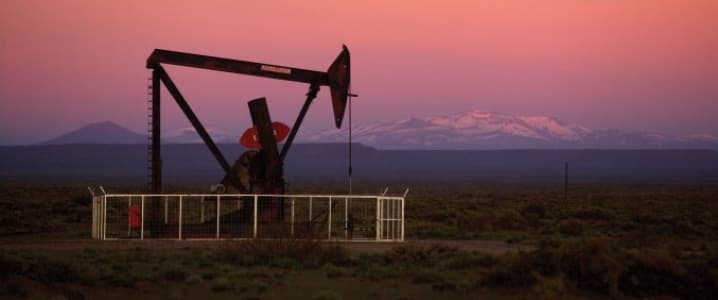Since oil prices recovered to over US$50 per barrel, analysts have started calling the bottom of the investment cycle in the oil industry. But while many U.S. onshore drillers are planning to increase capital budgets for this year, oil supermajors continue to be cautiously waiting to see where oil prices would go with the OPEC supply-cut deal and expected rebalancing of supply and demand.
The diverging paths that Big Oil and smaller U.S. shale-focused companies are planning in terms of capital expenditure this year is not just the fact that investment amounts are incomparable: dozens of billions of dollars vs. a couple of hundred million dollars. The different routes ahead for those two groups of companies are the result of starkly distinct financial and production growth priorities and the fundamental difference of the projects the firms have been undertaking for years.
U.S. shale drillers – which are emerging from the downturn leaner and fitter – are more flexible with adjusting spend to oil prices than the supermajors, most of which have invested in costly mega projects when they were comfortably planning spending at oil prices at $100 per barrel. Those highly capital-intensive mega projects are not quickly launched, stopped or re-launched.
According to a recent analysis by Wood Mackenzie, the U.S. Independents will respond first to the rising oil prices and could raise investment by more than 25 percent this year if oil prices average above US$50. The independents have three key competitive advantages: access to capital; cost-advantaged portfolios; and flexibility to scale back spend sharply if prices stay low. Oil majors, on the other hand, would continue to cut back spending, and their total investment this year is seen down by some 8 percent as recent capital-intensive projects wind down, Wood Mac reckons.
Case in point, in the U.S., Hess Corporation is raising its 2017 E&P capital and exploratory budget to US$2.25 billion from the 2016 spend of US$1.9 billion. Although part of the budget would go to projects in Guyana and Norway, Hess plans US$700 million investment in unconventionals, chiefly to increase from two rigs to six rigs by the end of 2017 and to bring online around 75 new wells in the Bakken in North Dakota.
Midland, Texas-based Diamondback Energy – which operates in the Permian Basin – increased in December its 2017 capex guidance to a range of US$700-US$900 million from a previous range of US$500-US$650 million. Related: The Oil War Is Only Just Getting Started
However, Wood Mackenzie chief analyst Simon Flowers has recently said:
“Enthusiasm is less overt outside the L48 – in fact some international independents plan to cut budgets further in 2017 to rebuild finances.”
It’s the rebuilding of finances that is the top priority for Big Oil now. They have been trying to stem the cash flow bleeding amid the low oil prices, and have amassed huge debts in order to maintain – and in some cases raise – dividends to keep shareholders happy. The recovery of oil prices, coupled with deep spending cuts, has recently improved the cash flow position for many of the oil majors, and they may not even have to resort to more borrowing to cover the coveted dividends.
This is not a reason for boosting spending right now, though.
Referring to capex increase, BP CEO Bob Dudley said in an interview with Bloomberg in Davos last month that the UK oil major will “keep the discipline under US$17 billion, like last year, this year and the year after, and then, after that, we’ll see”. Of course, he was explicit on how shareholders feel about dividends: “They really want it, there’s not question about it; they really want it”.
Chevron has said it would spend US$19.8 billion this year, down 42 percent on 2015 and at least 15 percent lower than outlays for 2016. Shell said on Thursday it would be investing US$25 billion this year, compared to 2016 organic capital investment of US$26.9 billion.
One notable exception from Big Oil’s investment plans is ExxonMobil, which said in its earnings call presentation earlier this week that it anticipates 2017 capex at around US$22 billion, compared to US$19.3 billion spent in 2016. Exxon is betting big on the Permian after more than doubling its acreage in the superstar shale area earlier this month. Related: Oil Prices Stuck In Narrow Band, Capped By U.S. Shale Threat
But Exxon’s is certainly not the general feeling within Big Oil ranks.
Commenting on the supermajors spending budgets, Gianna Bern, a former trader for BP who teaches finance at the University of Notre Dame, told The Wall Street Journal:
“The sector became a victim of its own success, bringing about the crash in crude oil prices, so the big players want to avoid doing that again.”
So in the near term Big Oil will continue to exert caution in spending plans while trying to shore up cash flows to strengthen balance sheets, and of course, keep shareholders happy with continuous steady flows of dividends.
By Tsvetana Paraskova for Oilprice.com
More Top Reads From Oilprice.com:
- Why 100% Renewable Energy Is Just A Dream
- Is Deepwater Drilling About To Make A Comeback?
- Saudis Raise March Crude Prices For All Customers



















The larger firms already have decades of inventory and know the costs in the Permian will get bid up and slim the irr delta with bakken or eagleford.
A fund with even 10b cannot use the math Exxon uses. Exxon is in a 30 year not 3 year game.